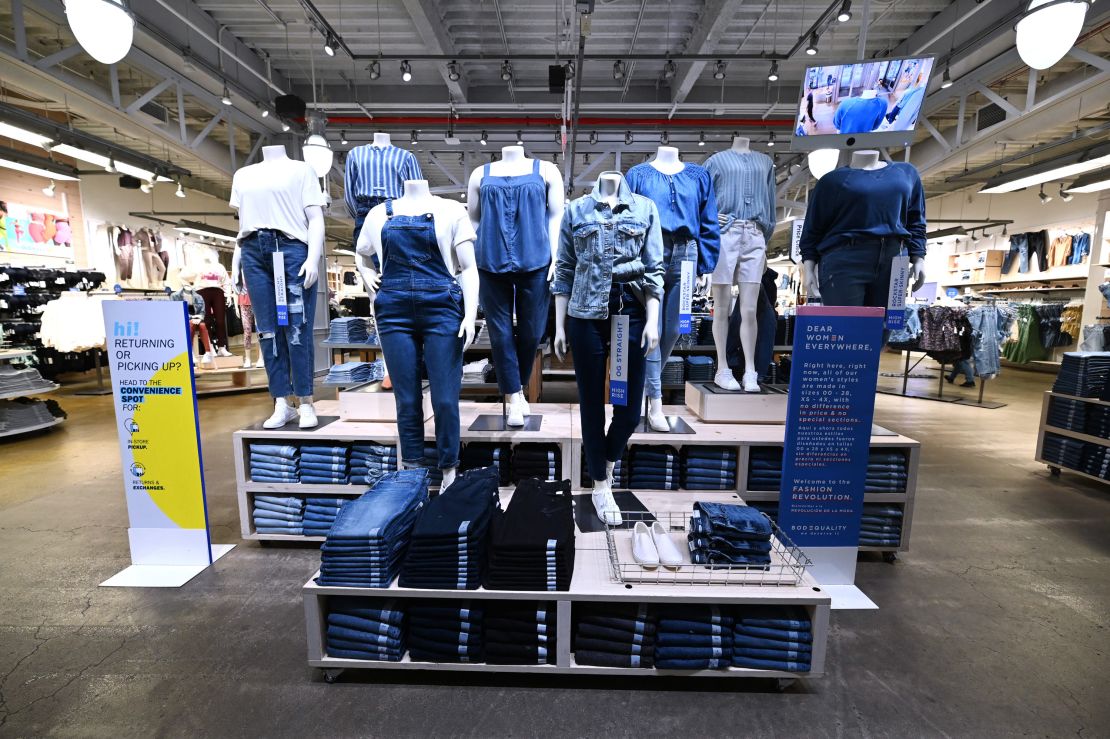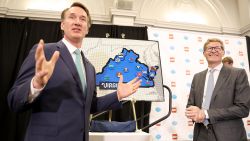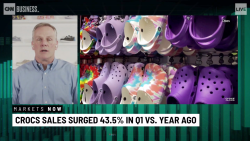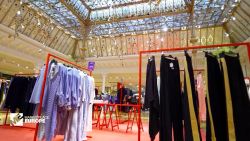Old Navy will end its practice of separate plus-size sections for women’s clothing in stores and online and begin offering all of its women’s apparel in sizes 0 to 30.
The move comes as online fashion brands such as Eloquii, Dia & Co., Elvi and Torrid gain success targeting younger shoppers looking for a more inclusive range of clothing sizes than retailers have offered in the past. Traditional retailers such as Target (TGT), Nike (NKE) and Nordstrom (JWN) have also broadened their size options. Part of that is because Lane Bryant, a specialty retailer for plus-size styles, has closed more than 200 stores in recent years, opening up a void in the market.
At Old Navy’s 1,200 shops, all of its women’s offerings starting Friday will be showcased together, along with new mannequins throughout the store in sizes four, 12 and 18. Signs will highlight the changes, and prices will be the same across sizes.
Online, Old Navy’s women’s and women’s plus-size collections will be merged together in one navigation menu and Old Navy will use models in sizes four, 12 and 18.
Old Navy, owned by Gap (GPS), has carried plus-size clothing sizes of 16 and above since 2004 and in 2018 introduced specialized plus shops within 75 stores. A year later, the company began testing concept stores with all of its merchandise grouped together.
Selling plus-size clothing hasn’t always gone smoothly for Old Navy, however. In 2014, the brand faced criticism for charging higher prices for women’s plus-size jeans than smaller-size jeans, but not doing the same in men’s jeans. A Change.org petition garnered close to 100,000 supporters to end Old Navy’s “discriminatory pricing practices.”
Alison Partridge Stickney, head of women’s merchandising at Old Navy, said in an interview that the latest changes were the result of feedback from hundreds of customers who described a “dismal” and “excluded” experience of shopping in back sections of retail stores to find their size. Old Navy conducted focus groups with women shopping for extended sizes and toured stores with customers.

“This is a big change in the way we work,” she said. “We had a team that managed our women’s business and a team that managed our plus business. So that meant merchandising, design, production.”
To offer all of its women’s clothing together, Old Navy created a single team managing the entire division.
The move makes financial sense for Old Navy, Stickney said, and “is one of the major pieces of the puzzle” to hit the brand’s goal of reaching $10 billion in annual sales by 2023, up from $7.5 billion in 2020.
Old Navy said that searches for “plus” on its websites were up 63% over the past year and pointed to data from NPD Group showing that the women’s plus-size apparel market was $20.4 billion in June.
“It is especially lucrative for a retailer like Old Navy which has a broad spectrum of consumers of all shapes and body types,” said Neil Saunders, managing director at GlobalData Retail, in an email. “For Old Navy and other mainstream players, I think they see an opportunity for growth in a part of the market that they don’t serve too well.”
The overhaul comes with challenges, though.
Adding sizes increases manufacturing complexity and costs for retailers, said Saunders. More fabric is used when producing extended sizes and additional design and fabrication expenses can come into play during the process. Women’s clothing brand Loft, for example, moved into plus-size clothing three years ago, but recently reversed course “due to ongoing business challenges,” the company said in March.
To be able to keep prices down and the same across sizes, retailers need to be purchasing significant volumes of clothing, said Elizabeth Shobert, director of marketing and digital strategy at fashion analytics company StyleSage.
“It certainly helps to have a healthy business and scale to do sizing properly,” she said.






















